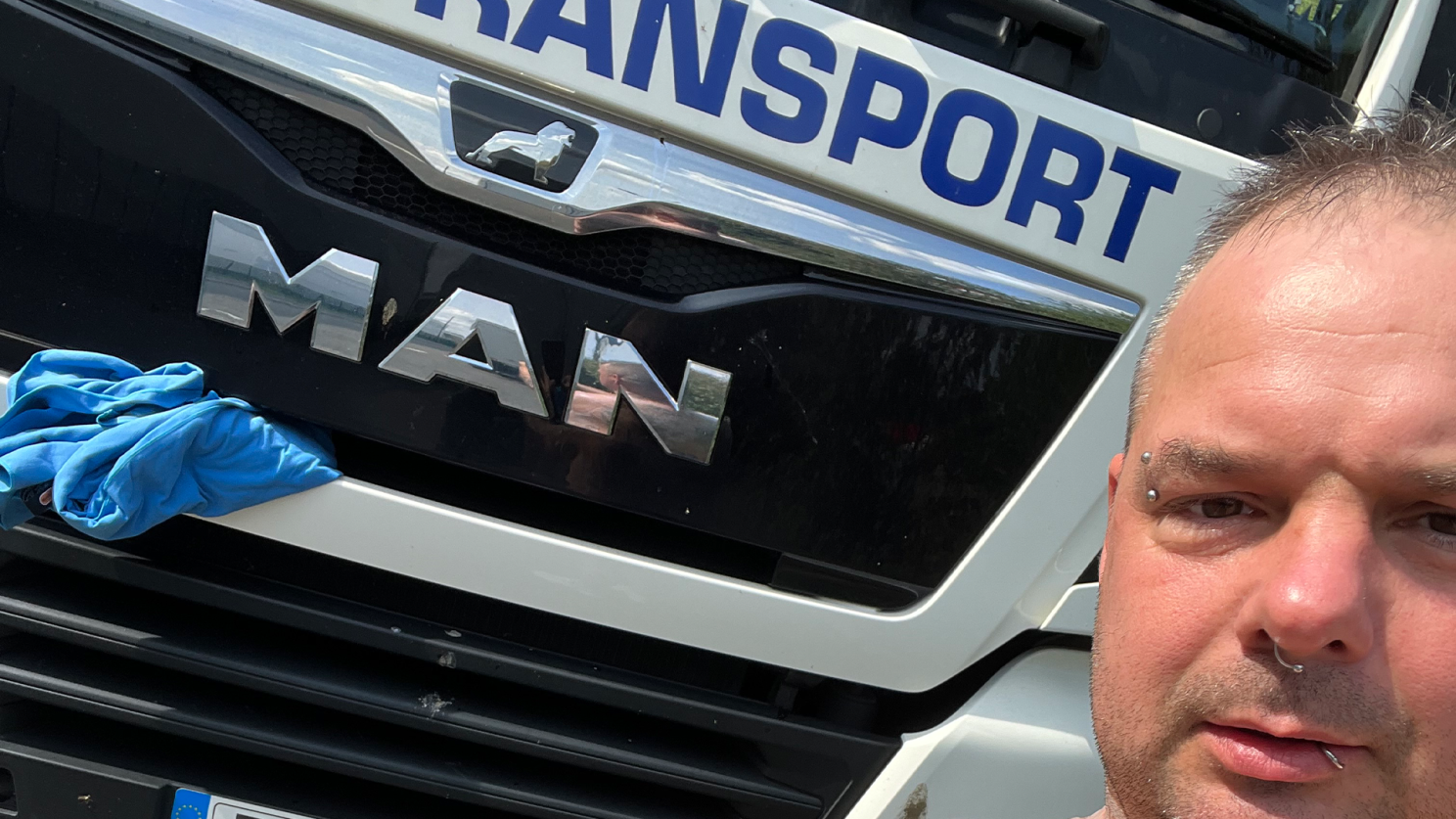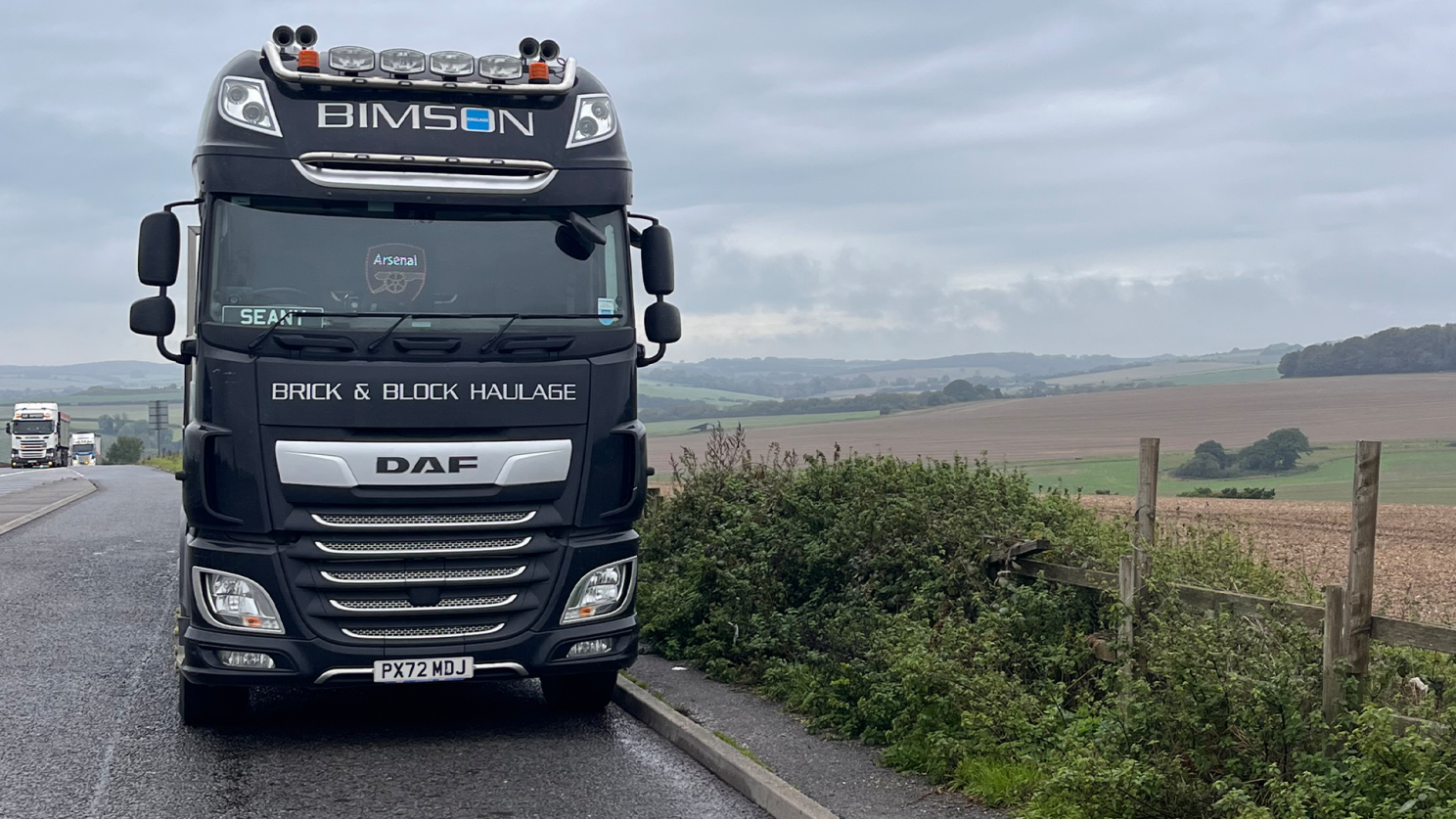
Susie Jones
Racconti di camionisti: storie dalla strada aperta
Creato: 22/08/2024
•
Aggiornato: 22/08/2024
Vogliamo fare luce sulla comunità degli autotrasportatori e conoscere le persone al volante.
Dagli elicotteri che atterrano davanti ai loro camion alle auto contromano in autostrada, scoprite di più sugli autisti che consegnano le vostre merci.
Alan
Alan guida da 23 anni e ha deciso di entrare nel settore dopo aver ascoltato le canzoni di Ally Thomson sulla guida dei camion. Quando gli viene chiesto cosa ama di più di questo lavoro, afferma che è "la solitudine che la guida dei camion porta con sé - c'è una completa separazione dalla vita domestica".
I camion Volvo sono i suoi preferiti, perché viaggia in tutto il Regno Unito trasportando le merci di Amazon. Dice di aver trasportato molti prodotti interessanti, "la scelta è illimitata, basta pensare a tutto ciò che Amazon vende".
Per gli autisti che parcheggiano durante la notte, intrattenersi durante i tempi morti è difficile. Tuttavia, gli autisti più esperti come Alan hanno imparato la loro routine serale alla perfezione. Egli afferma che "gli piace guardare Sky TV attraverso l'iPad" quando è in sosta per la notte.

Per gli automobilisti che non riescono a divertirsi al volante, abbiamo raccolto un elenco di modi per evitare che la noia prenda il sopravvento.
Anche se le lunghe ore di viaggio possono sembrare monotone per molti, Alan spiega che c'è sempre qualcosa che lo tiene sulle spine.
"Credo che la cosa più folle che ho visto mentre guidavo sia stato un elicottero che atterrava proprio davanti a me", spiega, ben lontano dalla reputazione monotona che ha avvolto il settore per decenni.
Con 23 anni di attività nel settore, Alan ci ha offerto alcuni consigli per mantenere freschi i vostri bianchi perlati durante i vostri viaggi.
Spiega: "Il consiglio che darei a chiunque sia nuovo nel settore è di ricordarsi sempre di tenere lo spazzolino carico".
Richard
36 anni fa, Richard ha iniziato la sua carriera nel settore dei trasporti e non si è mai guardato indietro. La passione per la guida gli è venuta quando si è unito ai suoi due fratelli maggiori per consegnare merci in tutto il Regno Unito.
"Mi piace prendere un carico e partire. Posso decidere quando fare una pausa e dove parcheggiare. Essere in viaggio e viaggiare in tutto il Regno Unito è fantastico", spiega.
Nel corso della sua carriera, la vita di strada lo ha portato a Milano, in Italia, un viaggio estenuante anche per gli autisti più esperti. Quando gli viene chiesto come si intrattiene durante i suoi viaggi, risponde: "Mi piace ascoltare musica e guardare film durante i tempi morti".

Il camion migliore per farlo? "Deve essere uno Scania Next Generation 450S", dice.
Per Richard, 30 anni nel settore non sono stati privi di storie assurde e di consegne insolite: "Ho visto un'auto andare contromano in autostrada, uscendo da una strada a scorrimento. La cosa più interessante che ho avuto sul retro del camion è un carro della parata di San Wilfred".
Sebbene ami ancora la strada aperta, Richard afferma che a volte ha un prezzo. Offre un'ottima visione della realtà di questa professione e consigli per chi vuole entrare nel settore.
"Pensate molto attentamente se questa è la carriera giusta per voi. Aspettatevi orari lunghi e la mancanza di molta vita familiare".
Sean
Essendo cresciuto in una famiglia di autisti, Sean aveva il camion nel sangue e 20 anni fa si è messo al volante per proseguire la sua carriera nel settore dei trasporti.
Il lavoro ha molti vantaggi, ma per Sean la libertà che offre è quella che ama di più. Questa libertà lo ha portato fino in Scozia per un servizio di sei settimane. Durante questi lunghi viaggi, telefonare agli amici e guardare la TV sono la sua fonte di intrattenimento.

Inoltre, le aree di sosta hanno svolto un ruolo fondamentale per Sean per combattere l'isolamento che la guida comporta. Spesso un covo di attività, le aree di sosta consentono a Sean di incontrare gli amici durante i suoi viaggi.
Questi pit-stop rappresentano l'occasione perfetta per ascoltare le storie assurde di altri camionisti. Come Richard, la cosa più strana che Sean ha visto durante i suoi viaggi è stata "un'auto che andava nella direzione sbagliata su un'autostrada al buio", una storia fin troppo comune tra i camionisti.
Un DAF XF 530 è il camion scelto da Sean per il trasporto di materiali edili in tutto il Regno Unito. Egli consiglia a chiunque voglia intraprendere una carriera nel settore degli autotrasporti di "darsi da fare!".
Dave
Dave guida camion da 30 anni e ha viaggiato fino alla Danimarca e alla Spagna. Quando non viaggia sul suo camion preferito, un Volvo FH, gli piace guardare le soap opera nel comfort della sua cabina.
"Il comportamento di alcuni automobilisti mi ha regalato storie assurde da raccontare", spiega. Tuttavia, quando abbiamo chiesto a Dave qual è la cosa più interessante che ha avuto nel retro del suo camion, ha mantenuto il riserbo: "È top secret", ha dichiarato.
Dopo 30 anni di trasporto merci, Dave ha imparato alcune cose sul mondo dei trasporti. Offre un ottimo consiglio a chi vuole iniziare la propria carriera nel settore: "Assicuratevi di specializzarvi in qualcosa".
Alastair
Relativamente nuovo nel settore, Alastair ha deciso di intraprendere la carriera di camionista per tenersi occupato dopo la pensione. Con cinque anni di attività alle spalle, si gode la varietà della professione più di ogni altra cosa.
Durante questo periodo, Alastair ha potuto viaggiare in tutto il Regno Unito e in Europa: "Ho viaggiato a Inverness, Copenhagen, Lisbona, Budapest e Roma", afferma.
Per evitare la noia, Alastair ascolta volentieri "Radio 4, LBC e 5 Live".
Viaggiando per l'Europa, ha assistito alla sua buona dose di comportamenti insoliti da parte degli altri utenti della strada. Tuttavia, è stato più vicino a casa quando ha dovuto manovrare il suo camion attraverso "le manifestazioni di Londra. È stata probabilmente la cosa più folle che ho vissuto", spiega.
Per i fan di 007, Alastair racconta di quando ha dovuto trasportare alcuni oggetti top-secret.
"L'oggetto più interessante che ho avuto nel retro del camion probabilmente sono gli oggetti da esposizione di James Bond", afferma.
Sebbene Alastair non sia in questo settore da molto tempo, ha qualche parola per i nuovi arrivati.
"Il consiglio che darei a chi sta pensando di entrare nel mondo del trasporto è di mantenere la calma".
Sean V
L'amore di Sean per la strada risale a molte vacanze estive trascorse con il padre a bordo del suo camion. Dopo 30 anni di guida, il suo amore per la guida continua a crescere.
"Ciò che amo di questo lavoro è vedere tutti i posti più belli del Regno Unito e dell'Europa", spiega. È un lavoro che lo ha portato in varie destinazioni: Roma è la meta più lontana che ha raggiunto.
Quando non esplora le città, Sean ama intrattenersi guardando la TV, usando il suo iPad e, fino a poco tempo fa, giocando nel comfort del suo taxi.

La cosa più assurda a cui ha assistito in viaggio?
Purtroppo, Sean si trova ad assistere a uno spettacolo fin troppo comune tra i camionisti: "un'auto che viaggia contromano in autostrada", spiega.
Durante i 30 anni di carriera, Sean afferma che i camion DAF sono stati i suoi preferiti da guidare e che l'articolo più interessante che ha trasportato è stato "l'attrezzatura medica specializzata".
L'amore di Sean per il settore supera alcuni aspetti negativi del lavoro. Tuttavia, per coloro che vogliono iniziare la loro carriera nel settore dei trasporti, ha queste sagge parole da offrire loro:
"Se state pensando di entrare nel settore, aspettatevi di fare molte ore di lavoro".
Iscriviti a SNAP oggi
SNAP ti semplifica la vita collegandoti alla nostra vasta rete di servizi di trasporto su strada. Iscriviti oggi stesso



